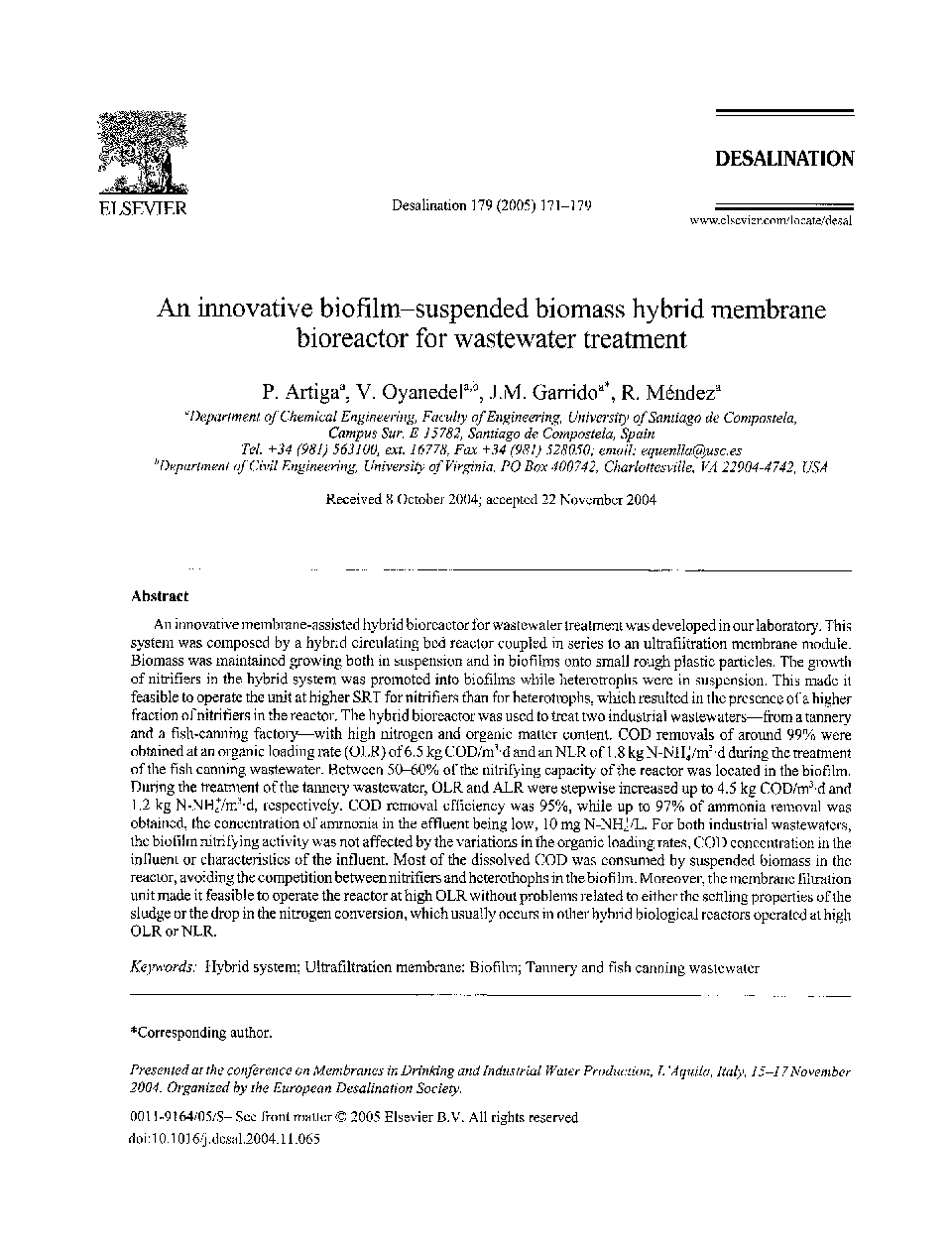| کد مقاله | کد نشریه | سال انتشار | مقاله انگلیسی | نسخه تمام متن |
|---|---|---|---|---|
| 9681101 | 1455511 | 2005 | 9 صفحه PDF | دانلود رایگان |
عنوان انگلیسی مقاله ISI
An innovative biofilm-suspended biomass hybrid membrane bioreactor for wastewater treatment
دانلود مقاله + سفارش ترجمه
دانلود مقاله ISI انگلیسی
رایگان برای ایرانیان
کلمات کلیدی
موضوعات مرتبط
مهندسی و علوم پایه
مهندسی شیمی
تصفیه و جداسازی
پیش نمایش صفحه اول مقاله

چکیده انگلیسی
An innovative membrane-assisted hybrid bioreactor for wastewater treatment was developed in our laboratory. This system was composed by a hybrid circulating bed reactor coupled in series to an ultrafiltration membrane module. Biomass was maintained growing both in suspension and in biofilms onto small rough plastic particles. The growth of nitrifiers in the hybrid system was promoted into biofilms while heterotrophs were in suspension. This made it feasible to operate the unit at higher SRT for nitrifiers than for heterotrophs, which resulted in the presence of a higher fraction of nitrifiers in the reactor. The hybrid bioreactor was used to treat two industrial wastewaters-from a tannery and a fish-canning factory-with high nitrogen and organic matter content. COD removals of around 99% were obtained at an organic loading rate (OLR) of 6.5 kg COD/m3·d and an NLR of 1.8 kg N-NH+4/m3·d during the treatment of the fish canning wastewater. Between 50-60% of the nitrifying capacity of the reactor was located in the biofilm. During the treatment of the tannery wastewater, OLR and ALR were stepwise increased up to 4.5 kg COD/m3·d and 1.2 kg N-NH+4/m3·d, respectively. COD removal efficiency was 95%, while up to 97% of ammonia removal was obtained, the concentration of ammonia in the effluent being low, 10 mg N-NH+4/L. For both industrial wastewaters, the biofilm nitrifying activity was not affected by the variations in the organic loading rates, COD concentration in the influent or characteristics of the influent. Most of the dissolved COD was consumed by suspended biomass in the reactor, avoiding the competition between nitrifiers and heterothophs in the biofilm. Moreover, the membrane filtration unit made it feasible to operate the reactor at high OLR without problems related to either the settling properties of the sludge or the drop in the nitrogen conversion, which usually occurs in other hybrid biological reactors operated at high OLR or NLR.
ناشر
Database: Elsevier - ScienceDirect (ساینس دایرکت)
Journal: Desalination - Volume 179, Issues 1â3, 10 July 2005, Pages 171-179
Journal: Desalination - Volume 179, Issues 1â3, 10 July 2005, Pages 171-179
نویسندگان
P. Artiga, V. Oyanedel, J.M. Garrido, R. Méndez,